Blyxa Aubertii (Bamboo Plant)
$4.00
It has long, narrow leaves of dark green color with a brown tinge. Under suitable aquarium condition, it reaches a height of 40–50 cm. The plant is suitable for keeping in a large aquarium where it should be placed it in the middle or background position. In the aquarium, it grows throughout the year if proper care is taken. In ideal conditions, it produces numerous small white flowers at the top of modified leaves.
- Reviews (0)
- Description
Be the first to review “Blyxa Aubertii (Bamboo Plant)”
You must be logged in to post a review.
Description
Blyxa aubertii is an expressedly decorative aquatic plant which is rarely commercially avaible because of its fragile leaves. Leaves are linear, 20-40 cm long, 0,5-1,5 cm wide, often reddish or olive-green. Under moderate lighting Blyxa aubertii will produce dark-green leaves, especially if nitrate is abundant. Light that is too dim or excessive shading will result in the detachment of individual leaves as they melt away from the central stem. Under bright lighting the plant will produce deep-red leaves. The red hue can be further enhanced with increase iron supplementation. The lower third of the leaf has three distinct edges, becoming more slender towards the top and finishing in a hair-thin tip. Although it develops best in soft, acid water, a satisfactory cultivation can also succeed in medium-hard, subalkaline water. Nutrient-rich substrate, strong lighting and CO2 addition is recommended to assist the plant’s growth, as strong specimens can be quite eye-catching with their 50-100 leaves. Plant-consuming fish should not be incorporated with Blyxa aubertii because they damage the sensitive leaves. The inconspicuous flowers can also be found regularly in the aquarium. They develop either above the surface or, in case of a too high water level, submersed.
Propagation of Blyxa aubertii is easily possible with rhizome division: separate side-shoot at the rhizome with about 6 leaves. Seeding cultivation is also possible, but lengthy and not easy. The white flowers on the tips of modified leaves can be pollinated manually, but that is not necessary, as the flowers are capable of pollinating themselves. With time the seeds can be seen through the walls of their encasement. When they have changed from a light green to a brownish color, it is time for sowing them in the tank. Plantlets can be moved when they have reached about 5-6 cm in height.
Quick Blyxa Aubertii Facts
Scientific name: Blyxa aubertii;
Common Name: Bamboo plant;
Family: Hydrocharitaceae;
Origin: Asia and Australia;
Water pH: 6.0–7.0;
Water temperature: 23–28 °C (73.4–82.4°F);
Water hardness: 5–6 ° dGH;
Propagation: By Cuttings;
Lighting need: Bright (0.3–0.4 W / l);
Recommended substrate: Fine gravel;
Ideal placement in a fish tank: Middle;
Leaves structure: Up to 45 cm in length with a width of 1.8 cm;
Maximum size: 40–50 cm;
Growth rate: Normal;
Housing and Care
For optimum growth, the plant needs a tropical aquarium with a water temperature of at least 24 °C. The total hardness of the water should not exceed 5–6 ° dGH. The plant degrades very quickly and dies in more severe water. The pH of the water should be close to neutral or slightly acidic (6.0–7.0). The water should be clean and 20 -25% water should be changed regularly to keep the aquarium environment healthy.
For the proper maintenance of the plant, a relatively large volume aquarium is required and planting is necessary for the middle or background position of the aquarium. If the plant is planted in the central part of the aquarium, it looks like as an ornament.


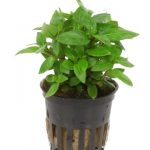
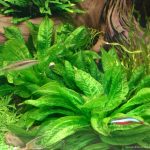


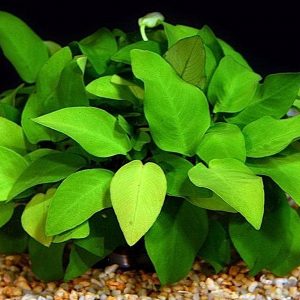
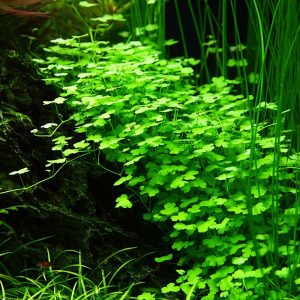
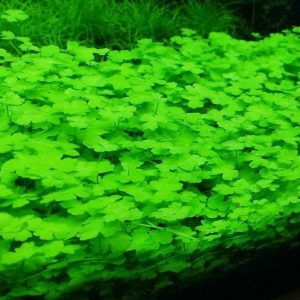
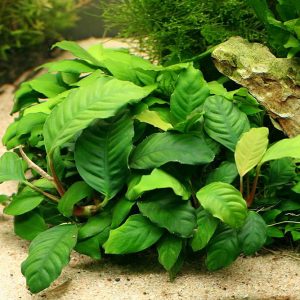

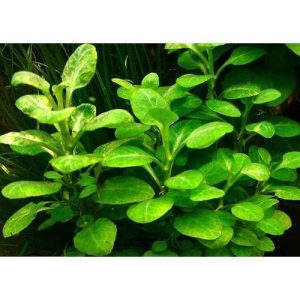
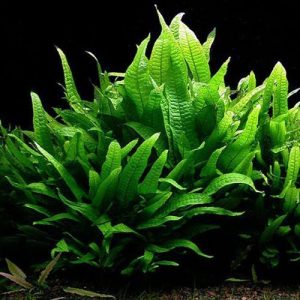
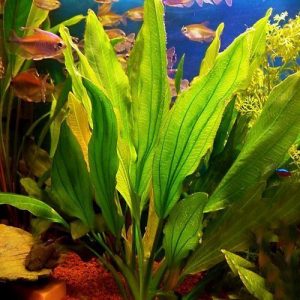
Reviews
There are no reviews yet.